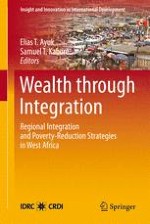2013 | OriginalPaper | Buchkapitel
10. Efficiency of Credit That Targets the Poor: Measures and Application of Agricultural Credit in Burkina Faso
verfasst von : Samuel Tambi Kaboré
Erschienen in: Wealth through Integration
Verlag: Springer New York
Aktivieren Sie unsere intelligente Suche, um passende Fachinhalte oder Patente zu finden.
Wählen Sie Textabschnitte aus um mit Künstlicher Intelligenz passenden Patente zu finden. powered by
Markieren Sie Textabschnitte, um KI-gestützt weitere passende Inhalte zu finden. powered by
